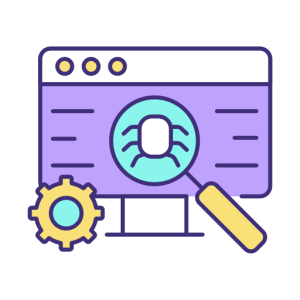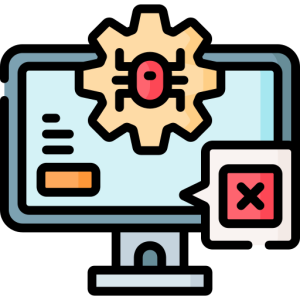Exploratory Test 2023

Exploratory testing is a crucial part of the software testing process that involves simultaneous learning, designing, and execution. Unlike traditional scripted testing methods, exploratory testing emphasizes the tester’s expertise and creativity in uncovering hidden bugs and usability issues. It is an unstructured approach where the tester relies heavily on their intuition and domain knowledge to explore the application.
Free Exploratory Practice Test Online
Exploratory Testing Example
Exploratory testing is an important and dynamic approach to software testing that encourages testers to think creatively and uncover potential issues by actively exploring the application. Let’s consider an example to demonstrate the effectiveness of exploratory testing in identifying critical bugs.
Imagine a team is developing an e-commerce website, and one of the main functionalities is adding products to the shopping cart. During exploratory testing, a tester inputs various types of product data such as name, description, quantity, and price. While doing so, they notice that inputting special characters in the quantity field leads to unexpected behavior: instead of displaying an error message or rejecting invalid input, the website simply adds NaN (Not a Number) as the quantity for that particular product. This bug would have been difficult to detect through traditional test case-based methods alone without allowing for this agile form of testing.
This example illustrates how exploratory testing enables testers to go beyond predefined test steps and engage with applications more dynamically. By interacting with different components and using real-time feedback from their exploration, they can identify scenarios that may be skipped during structured test planning. Exploring software in this way helps highlight risks that might otherwise go unnoticed until after release but are vital for delivering high-quality software experiences.
Exploratory Testing in Agile
One of the key challenges faced by agile teams is ensuring that their software is thoroughly tested in a short span of time. This is where exploratory testing comes into play. Unlike traditional test cases that are predefined and scripted, exploratory testing encourages testers to think on their feet and uncover potential issues through hands-on experimentation with the software. By allowing testers to adapt their approach based on real-time feedback, this method can efficiently identify critical defects that might have otherwise gone unnoticed until later stages of development.
The beauty of exploratory testing in an agile environment lies in its flexibility. Agile teams value adaptability and responsiveness above all else, and this approach aligns perfectly with those principles. Instead of strictly following predetermined test cases, testers are encouraged to explore different paths, try various scenarios, and experiment with unexpected inputs. Through these unscripted activities, they have the freedom to stumble upon unique bugs or usability issues that would have been missed by conventional methods alone. Exploratory testing allows for more creativity and innovation within the testing process, enhancing overall product quality at each iteration.
Exploratory testing also serves as a catalyst for effective collaboration within agile teams. By breaking away from the rigid structure of traditional test plans, this approach enables seamless communication between developers, designers, and testers throughout the entire development cycle. Testers can quickly provide feedback to developers during pairing sessions or daily stand-ups about potential areas of concern they discovered during their exploration exercises.
By fostering open dialogue and encouraging interdisciplinary collaboration early in the development process, exploratory testing helps teams identify and address issues before they become major roadblocks.

Exploratory Testing Tools
Exploratory testing is an approach to software testing that involves simultaneous learning, test design, and execution. It relies heavily on the tester’s ability to think critically and uncover potential issues through hands-on exploration of the software. To support this dynamic testing method, there are several exploratory testing tools available in the market.
One such tool is Testpad, a user-friendly tool that allows testers to create and execute exploratory tests collaboratively. With Testpad, testers can quickly jot down their ideas as they explore the software, add steps or notes to existing tests on the go, and share their findings with other team members. This not only enhances productivity but also promotes effective communication within the team.
Another popular exploratory testing tool is SessionStack. This powerful tool enables testers to record their entire testing session while capturing every interaction made during the process. It provides detailed insights into how users interact with the software by recording each click or scroll performed during a session. These recordings can be reviewed later for deeper analysis or shared with stakeholders for better understanding of user behavior.
Overall, these tools greatly enhance the effectiveness and efficiency of exploratory testing by providing testers with easy-to-use interfaces and valuable insights into their sessions. By using such tools effectively, testers can uncover hidden defects more efficiently and deliver higher quality products to end-users.
Exploratory Software Testing
Exploratory software testing, also known as ET, is a dynamic and creative approach to testing that relies on the tester’s knowledge, skills, and intuition. Unlike traditional scripted testing methods that follow predefined test cases, exploratory testing is more free-form and improvisational. The tester takes on the role of an end-user, exploring the application or system in real-time to discover potential bugs or issues that may not have been anticipated.

One of the key advantages of exploratory testing is its ability to uncover hidden defects in software. Since it does not rely on predetermined test cases, testers are able to think outside the box and try different scenarios or combinations of actions that could potentially cause problems. This can be especially useful in complex systems where traditional testing approaches might overlook certain conditions or interactions.
Another benefit of exploratory testing is its close alignment with user experience. By putting themselves in the shoes of the end-user, testers can better understand how real users will interact with the software and identify any usability issues or pain points. This user-centric approach can result in more intuitive and seamless applications that meet customer expectations.
In conclusion, exploratory software testing offers a fresh perspective by breaking free from rigid test cases and embracing creativity. It allows for flexibility and adaptability while uncovering hidden defects that might have gone unnoticed through scripted methods alone. By focusing on user experience, exploratory testing brings us closer to delivering high-quality software products that truly resonate with our target audience’s needs and preferences.
Exploratory Testing Automation
Exploratory testing automation has emerged as a game-changer in the world of software testing. Traditionally, exploratory testing has been done manually, with testers relying on their intuition and expertise to uncover defects. However, with the advancement of technology and the rise of artificial intelligence, automation tools are now available that can assist in exploring and testing software in a more efficient and systematic manner.
One of the biggest advantages of exploratory testing automation is the ability to accelerate the testing process. With automated tools, testers can quickly generate data sets, perform repetitive tasks, and simulate various scenarios without tedious manual effort. This enables them to cover more test cases within a shorter timeframe and identify potential issues that might have been missed during manual exploration.
Moreover, automating exploratory testing reduces human errors since machines follow predefined instructions accurately. This improves both the reliability and consistency of tests performed. Additionally, machine learning algorithms can be used to analyze previous test results and suggest possible areas for further exploration based on patterns or trends observed. This not only saves time but also helps testers focus their efforts on potentially high-risk or critical areas.
In conclusion, while exploratory testing will always rely on human intuition and creativity to some extent, incorporating automation tools into the process can significantly enhance efficiency and effectiveness. Combining machine precision with human flexibility creates a powerful synergy that allows testers to explore software more thoroughly while saving time and resources. By leveraging the benefits of exploratory testing automation wisely, organizations can ensure higher software quality in less time—without compromising the agility and adaptability of human testers. It is important to strike a balance between manual exploration and automated techniques, as each approach brings its own strengths to the table.

Exploratory Testing Documentation
Exploratory testing is a crucial part of software testing, as it allows testers to adapt and explore the software in real time. However, documenting these testing sessions can often be overlooked or undervalued. Many testers believe that since exploratory testing is informal and dynamic, writing detailed documentation is unnecessary. However, this couldn’t be further from the truth.
Documentation plays a vital role in exploratory testing by providing a clear record of the testing process and its results. It acts as a reference point for future discussions and helps communicate findings to stakeholders effectively. While traditional scripted test cases provide structure and repeatability, they may not capture all the nuances and serendipitous discoveries made during exploratory testing sessions. By documenting these insights meticulously, testers can ensure that valuable information is preserved for future iterations or reference.
Additionally, comprehensive documentation assists in creating a knowledge base that can be shared amongst team members. It enables collaboration by allowing other testers to review documented exploratory sessions and gain additional insights or build upon previous findings. Documentation also aids in troubleshooting issues encountered during exploratory testing by providing an overview of steps taken and possible workarounds attempted
Therefore, while many believe that documentation hampers creativity or agility during exploratory testing, it actually enhances it by capturing essential details that might otherwise go unnoticed or forgotten. With proper documentation practices in place, teams can foster better communication among their members while demonstrating accountability to stakeholders throughout the entire software development lifecycle.
How to Do Exploratory Testing
Exploratory testing is an important approach in software testing that allows testers to think outside the box and discover new possibilities. It involves simultaneously designing and executing tests, essentially exploring the software application without a predetermined test plan. Unlike scripted testing, exploratory testing is flexible and adaptive, making it an efficient method for finding bugs and usability issues.

One key aspect of exploratory testing is leveraging the tester’s knowledge and experience. Testers can draw on their past experiences to guide their exploration of the software while also keeping an open mind to avoid any biases. By approaching each test with curiosity and thinking creatively, testers can uncover hidden defects that may not have been captured in traditional test cases.
Another essential element of exploratory testing is documentation. While there may not be pre-defined steps or scripts, it’s crucial to keep track of what was tested, how it was tested, and any defects found along the way. Clear documentation allows others to retrace your steps, reproduce bugs successfully, and further investigate any reported issues.
In conclusion, exploratory testing brings a unique perspective to software QA by encouraging testers to be curious explorers. Leveraging their knowledge and experiences while documenting their findings enables teams to uncover valuable insights into software performance beyond scripted tests alone. This approach empowers testers to dive deeper into an application’s potential weaknesses or undiscovered functionalities – ultimately leading to better quality assurance practices overall.
Benefits of Exploratory Testing
Exploratory testing, a flexible and hands-on approach to software testing, offers several key benefits that traditional scripted testing might overlook. Firstly, exploratory testing allows testers the freedom to actively think and engage with the software in real-time, leading to more effective bug detection. On-the-fly tests can lead testers down unforeseen paths and uncover unique issues that may not have been considered during the initial test design phase. This open-mindedness also enables testers to better simulate realistic user scenarios, ensuring a more comprehensive evaluation of the software’s functionality.
Additionally, exploratory testing provides an excellent opportunity for knowledge sharing within teams. By encouraging participants to freely discuss their findings and insights during live sessions or daily stand-ups, every team member gains valuable insight into different perspectives on how the system is behaving. This collaborative environment fosters teamwork and enhances communication between individuals with diverse skill sets and experiences.
Furthermore, exploratory testing promotes adaptive planning by allowing testers to continually adjust their test approach based on emerging discoveries throughout the process. Agile environments particularly benefit from this fluidity as they prioritize flexibility over rigid processes. The ability to adapt quickly ensures that defects are caught early on in development cycles when they can be resolved swiftly before impacting project timelines significantly.
In conclusion, exploratory testing offers distinct advantages over scripted approaches by embracing flexibility, fostering collaboration among team members, enabling adaptive planning capabilities, and providing a more accurate reflection of real-world user interactions with the software under test.